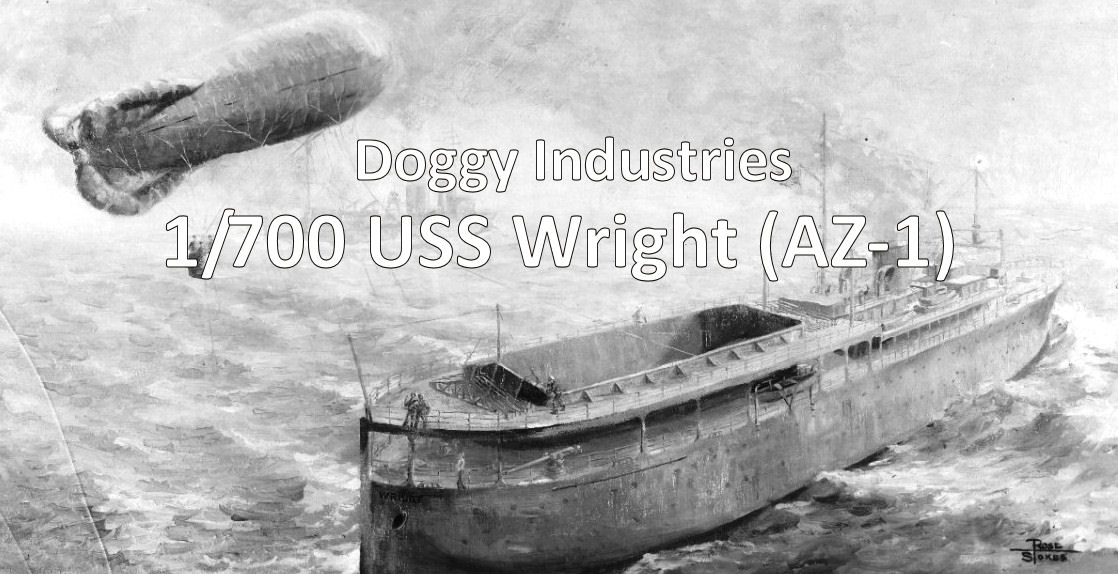

|
by Martin J Quinn |
|
| HISTORY | |
|
USS Wright,
named for Orville Wright of Wright Brothers fame, was an auxiliary ship
in the US Navy. Built in Philadelphia, PA, the ship – initially named
SS Skaneateles - was laid down in February 1919 as a Hog Island
type "B" cargo vessel at American International Shipbuilding Corporation.
Launched on April 28, 1920, she was then moved to a Hoboken, NJ shipyard, where she was completed as a "lighter-than-air aircraft tender”. She was commissioned into the Navy, as AZ-1, USS Wright, on December 16, 1921, at the New York Navy Yard. Wright began her career supporting Scouting Division 1 and tending to seaplanes along the East Coast of the United States and in the Caribbean. Her official career at a balloon tender was a brief one, as she raised her kite balloon for the last time in July, 1922. Afterwards, she tended seaplanes, such as NC-10 flying boats and F5L seaplanes, during training and fleet exercises, such as Fleet Problem 1 in 1923. After a foray into the Pacific Ocean, and a trip to Pearl Harbor, Wright was converted to a seaplane tender at Norfolk, VA in 1925, subsequently being re-designated AV-1. As AV-1, she had a long and varied career, highlighted by this alleged encounter on the night of December 6/7, 1941, per Wikipedia: “During the night of 6/7 December 1941, while sailing toward Pearl Harbor at night, the crew spotted an aircraft carrier that overtook it as it sailed toward Hawaii. Whether Wright radioed a report of the sighting or not is unclear, but even if they had, the report was not recognized for what it was—an actual sighting of one of the Japanese aircraft carriers just hours prior to the attack, and the only such sighting made by an American Naval asset. The sighting was recalled by a former member of the crew serving on Wright named Sherwin Callander. As an elderly gentleman in 2019, while being interviewed for a video, unexpectedly he recalled, "A carrier passed us, going in the same direction. We were headin' back to Pearl and they were headin' towards Pearl too. And we knew it was a carrier -- it was at night -- but we didn't know what nationality it was. Then the next morning, we heard over the news broadcast that they attacked Pearl Harbor.” (I can’t recall ever hearing this story before, and can’t imagine that Wright wouldn’t have been quickly dispatched by the Japanese if their paths had crossed in the dark and stormy Pacific that night.) Reclassified AG-79 in October 1944, she was renamed San Clemente in February 1945, freeing up her name for a new light carrier then under construction. For more on Wright’s career, both as AZ/AV-1 and finally as AG-79, see her Wikipedia page here: USS Wright (AV-1) - Wikipedia. You can find photos of Wrighthere and here. |
